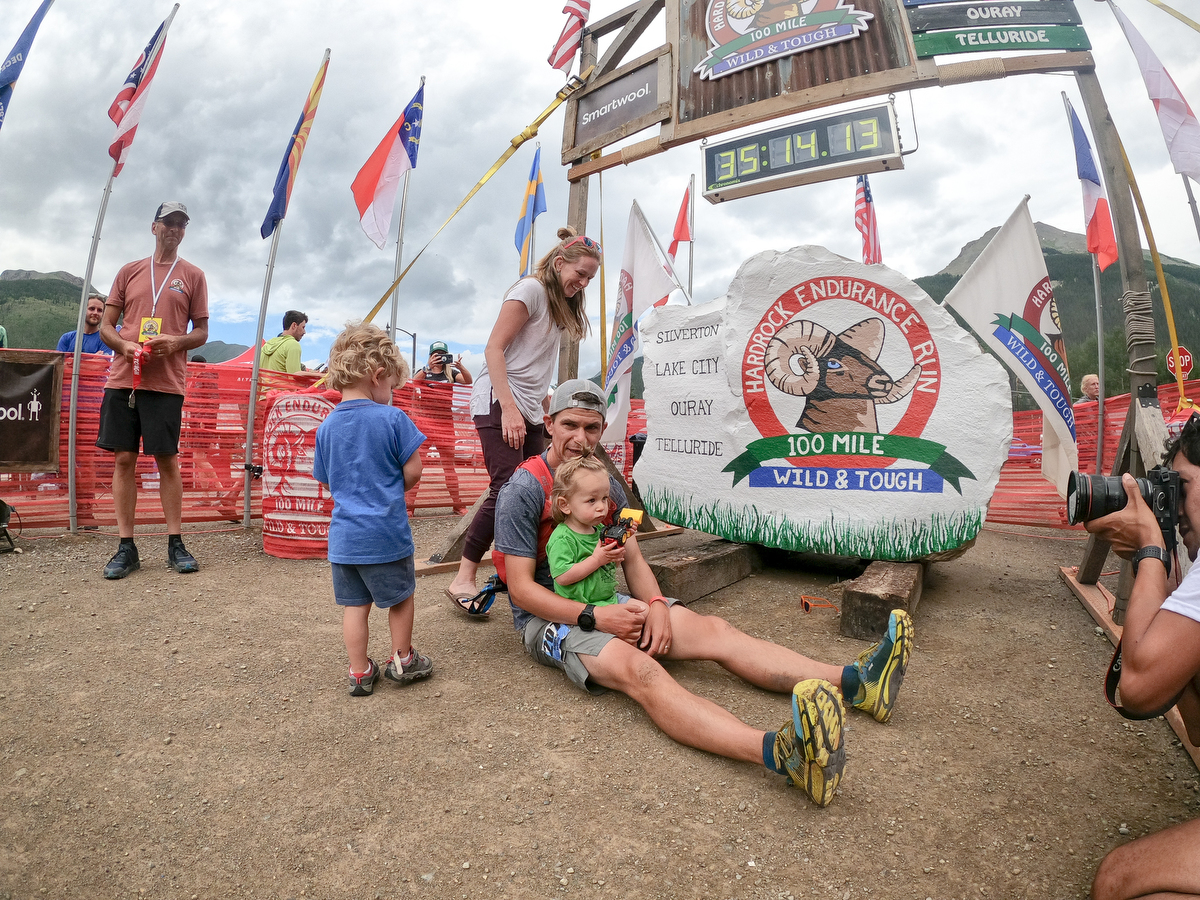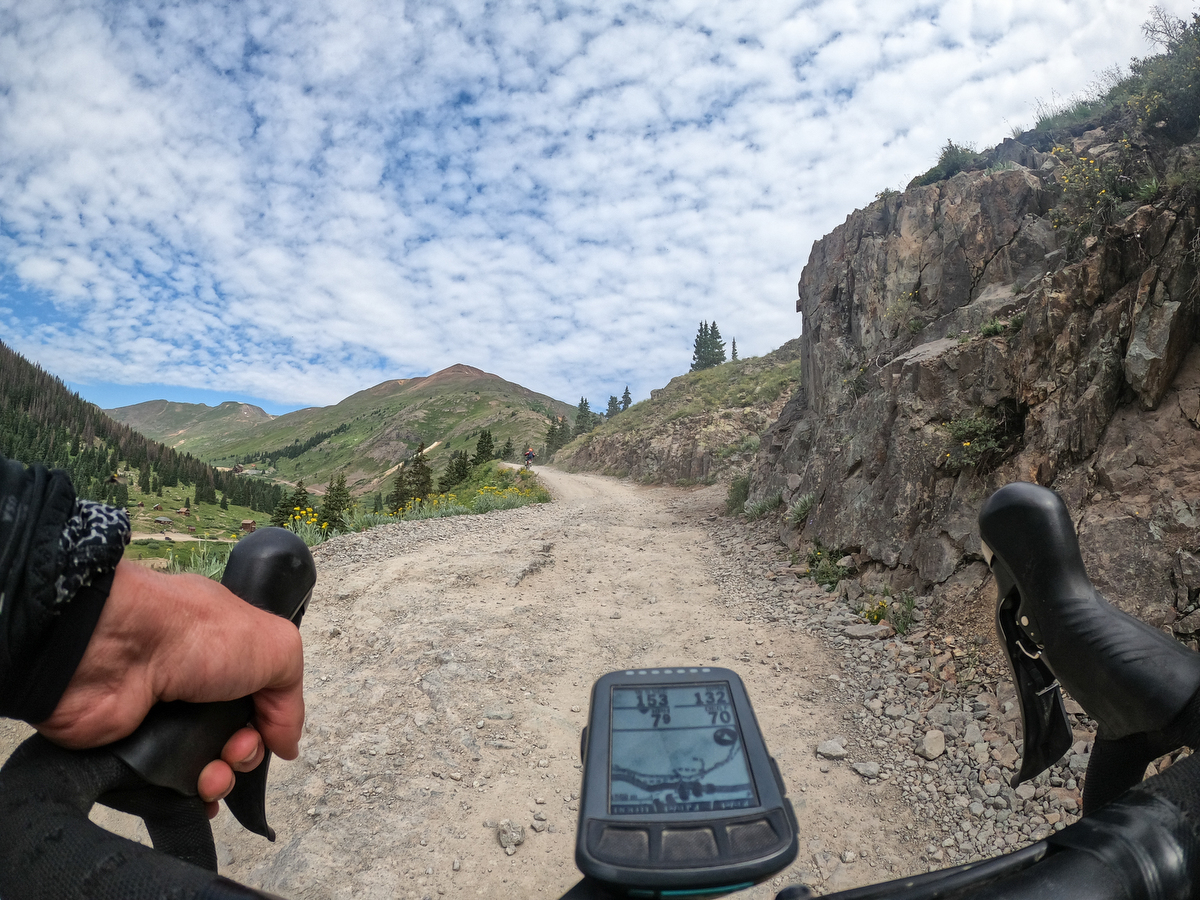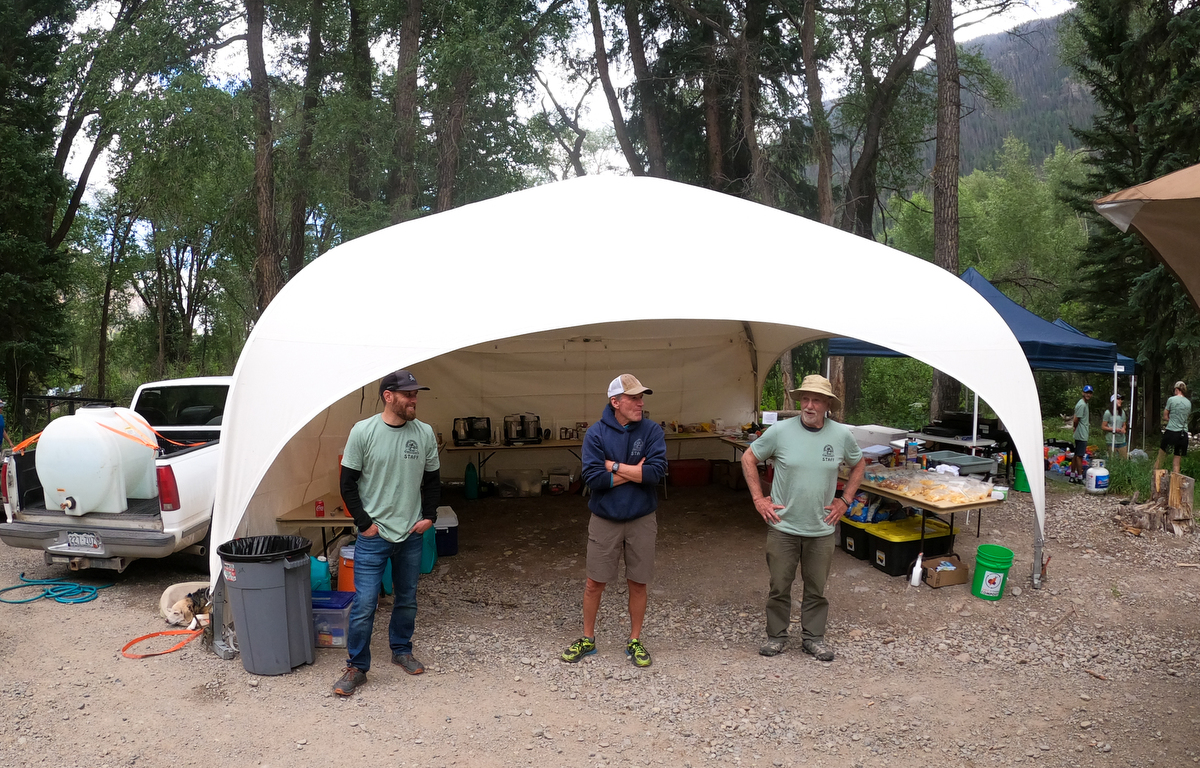[Editor’s Note: This article was written by guest author Logan Jones-Wilkins, a writer and gravel cyclist from Richmond, Virginia. He is currently a junior at the University of Richmond studying Politics, Philosophy, Economics, and Law (PPEL); Journalism; and Political Science. You can find him on Instagram, Twitter, and Rodeo Adventure Labs.]
It’s 5:30 a.m. on Friday, July 16, 2021. First light creeps among the dirt streets of Silverton, a tiny mountain town in southwestern Colorado, brightening the surrounding rock cathedral that is the San Juan Mountains.
The serenity of the night gives way as endurance athletes and enthusiasts gather for the 6:00 a.m. start of the Hardrock 100. A few hundred people slowly emerge from the hotel rooms, RVs, vans, and cars that have served as sleeping quarters for the visitors to the town of 534 full-time residents. Quickly, the air fills with the levity of a midsummer morning at more than 9,000 feet altitude.
The Hardrock 100 started in 1992 as a “wild and tough” idea from several mountain runners and ultrarunners, including Gordon Hardman, John Cappis, Charlie Thorn, and Rick Trujillo, to connect the four major mining towns of the San Juan Mountains: Silverton, Lake City, Ouray, and Telluride. That concept was passed along to Hardrock run director Dale Garland through a conversation his father had at the Western States 100.
From their ideas grew a 100-mile loop that traverses 13 passes, travels at an average altitude of 11,186 feet, and climbs more than 33,000 vertical feet. Through its almost-30-year history and long honor roll of previous participants picked from an annual lottery, the buzz around Hardrock has, over the years, grown into a roar.
Runners, their crews, and members of the media gather around the run’s centerpiece — a massive branded rock in the middle of the street — as the clock ticks toward 6:00 a.m. Perched atop the rock, resplendent in a well-loved hat and fleece jacket, stands Garland. As each minute passes, Dale calls out a joyful warning — a tongue-in-cheek taunt — to the crowd below him.
Every year, as the ultrarunning world turns its attention to this corner of the sport, Garland is here with open arms and an open heart, welcoming every runner to the finish line as they complete the course, his warm greeting almost as much of a requirement as the famous kiss of the rock each finisher enjoys upon their arrival.
For the run director, these homecoming sentiments are genuine. A massive snowfall and the COVID-19 pandemic canceled the event in 2019 and 2020, so this year’s running marks a triumphant return. Like a schoolteacher back from summer break, it is clear that for the exuberant Garland — who actually is a schoolteacher — time has only made the heart of this event stronger.
“I think if you ask any of these people right now what makes this year so special, it’s the fact that we haven’t been together for a couple of years and haven’t been part of our small Hardrock community.”
For Garland, teaching and event directing are not separate pursuits. They are in and of the same substance, one that Garland embodies in his daily life.
“The first thing is, you know in class as a teacher and here, that we try to build relationships,” Garland explains. “Relationships with runners, crews, families, and volunteers. The idea is that the most effective things center around positive relationships …
“The other thing is the organization, thinking through everything while also being able to adapt. I mean, there have been so many times in my teaching career where I thought I was going to teach something, and it didn’t work. I had to change plans midstream to try to figure out what would work best.”
From my time competing at some of the largest gravel bike races in the country, this morning scene and the charismatic patriarch are a familiar oddity. The enthusiasm of an early morning starting line feels the same here in ultrarunning as it does in gravel bike racing: anticipation and caffeination in the air; incredibly fit men and women pretending to be ready; and friends and families happy to support while also feeling anxious over the absurdity of the task at hand.
I’ve come to Hardrock this year not as a runner, nor a true member of the media, but instead as a sympathetic outsider. I am a cyclist and contributor for Rodeo Adventure Labs, a bike and adventure brand based in Denver, Colorado, and have been racing on bikes since I was 14 years old.
While mostly racing road bikes, over the past two years I’ve made the transition to the nascent discipline of gravel. Earlier this summer, I finished top 20 at the Unbound Gravel 200 Mile, a premier gravel event in the United States. This weekend, I found myself between races and with a mountain itch to scratch.
The last time I visited Hardrock was in 2016 as a crew member for my dad, Andy Jones-Wilkins (AJW), iRunFar columnist and ultrarunner, who completed the race that year. With my dad at home in Pennsylvania this time around, here I am, crawling out of my Toyota Prius with instant coffee in one hand and an audio recorder in the other, ready for the 48 hours to come.
From Silverton, shortly after the runners shuffle away from the rock, I mount my trusty gravel bike and head northwest toward the first aid station of the day in Cunningham Gulch, at a little over nine miles into the 100-mile event. There, I catch the flow of runners in the second half of the field, and I begin to observe.
From the cavernous walls of Cunningham Gulch, I continue to ride somewhat parallel to the event course. I find my way to the abandoned mines in the ghost town of Eureka, head west up a gloriously chunky dirt road, and then ride over the even rockier Cinnamon Pass.
After topping out at the pass’s heady height of 12,900 feet — a mere 1,100 feet short of the high point of the Hardrock course on Handies Peak — I careen down, past the Burrows Park aid station and onto the Sherman aid station thousands of feet below. I hope to find the leaders in the proverbial thick of it as they approach the heart of the run.
Sherman is a standout aid station on the course. While it sits at a pivotal point on the course, about 28 miles of running in this year, it is also in the most inaccessible location for crews, as the shortest route is the one I took over the rowdy Cinnamon Pass.
For any crew not equipped with a high-clearance vehicle, the cross back and forth over Cinnamon is too much. And the paved-road alternative is a 100-plus-mile, multi-hour trek out of the way.
While most of the run’s other aid stations are also far-flung, Sherman — and Lake City, the closest town from it — are deep in the heart of Colorado. In this isolation comes an entirely new cast and crew. With music, Christmas lights, and nowhere to be, Sherman is as much a family picnic as it is an organized event. Clad in matching volunteer t-shirts and chatting away the afternoon is the small legion of Lake City high schoolers who will serve the needs of the many runners whose crews can’t make it over to this far side of the mountain.
“We’d like to have all the runners who come through be able to continue,” Bruce Heath, a self-described Lake Citian, says as he stands proudly in front of the kitchen station with two deputies by his side.
“As time goes on, you’re going to see some people who are struggling and it’s going to be a big decision about whether or not they should go on. Most of it is up to them, but some of it is up to the medical volunteers. The goal is, let’s let the people who can finish, finish, and let’s get the people who aren’t able to, back in shape.”
From Sherman, my lunch bell rings as I make my way to Lake City, the only populated outpost on today’s 80-mile biking route. The town, a city in name only in this current post-mining era, sits well outside the Hardrock course, but it is my midpoint, connecting the vaulted trails of my route.
After lunch, I start my trek back through the heart of the San Juans, this time climbing up and over Engineer Pass. Mighty Engineer Pass wraps around a domed peak among a cluster of even mightier summits. At the top, the two paths of the day merge. From the high point at the summit, the descent back toward Silverton is punctuated by the leading runners now ascending out of the Grouse Gulch Aid Station, mile 42 of the course.
As the runners close in on the halfway mark, my bike ride wraps up with a descent back to Silverton, where I stay the next two mornings, welcoming the runners from across the performance spectrum back to the rock. The first ones will arrive early tomorrow morning, before daylight. And the last ones take an extra day and must arrive within 48 hours of the race start for an official finish.
One of the sweetest attributes of Hardrock is the egalitarian joy of the finish, and nothing quite underscores this more than the “golden hour” of Sunday morning, the last hour of the event. It is then — the third morning of car sleeping, instant coffee sipping, and parking lot living for the fans and the approach of the weekend’s third sunrise and the last chance to nab an official finish for the run’s participants — when the spirit of the event shines.
As the clock ticks toward 6:00 a.m., the buzz grows once again, and the forming crowd anticipates those lucky last few destined to race the time limit. Scores of athletes and spectators in running attire, trucker hats, and spindly bare legs roam the streets to burn off their anticipatory energy and squint their eyes backward on the course to see who might be the next finisher.
While any 100-mile foot race will pique the interest of a casual trail runner, the exploits of Hardrock floor even the most athletically ambitious. From my two days spent covering the run course by bike, forging my own route over adjacent passes of the course, what grips me is the exceptionality of the event. In geography, personality, and audacity, the Hardrock is in a league of its own.

Runner Anders Wood sits with his family at the finish line of the 2021 Hardrock 100, after finishing in 35 hours and 13 minutes.
What Hardrock does, potentially accidentally and certainly by the absence of corporate interference, is to occupy space in the ultrarunning world — space that just happens to be in one of the most challenging and spectacular stadiums of the sport. All that’s left for the team in Silverton to do is to sit back by the big rock in the road, away from the fists of inquiring financiers, and welcome the lucky passers-by like me to one of the last vestiges of pure endurance racing.
“I’m a little older now than I was when I first started this stuff, but still I ended up getting altitude sickness out there this year, which is very abnormal for me,” Neal Taylor tells me at the Silverton gym, hunched under a blanket, gripping a cup of the warmest liquid the volunteer cooks could produce. Taylor just returned to the rock for an 11th time, this time taking 46 hours and 50 minutes to make the 100-mile loop.
“I had decided to quit two times out there and I’ve never done that before. Then, just coming in, defying those thoughts, kissing that rock, and having friends, family, crew, and pacers around. Man, that’s a high point right there. This event is special. Every time I finish, I say never again. Then, once again, I am back.”
Call for Comments
- If you haven’t been able to get into the Hardrock 100 via lottery, would you consider hiking, running, or even biking around the course like writer Logan Jones-Wilkins did to get a feel for it?
- What is the biggest impression Hardrock has left on you over the years of following, spectating, or perhaps participating in the event?





